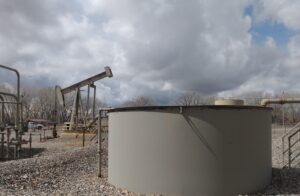How robots could limit the environmental impact of offshore windfarms
4 min read
Spending on global offshore renewable energy infrastructure over the next ten years is expected to reach over US$16 billion (£11.3bn). This involves creating an extra 2.5 million kilometres of global submarine cables by 2030.
To lay and secure these cables against ocean currents involves ploughing the seabed and dumping rocks and concrete “mattresses” to serve as a base for the cables – procedures which are highly disruptive to the marine ecosystem that so many creatures call home.
Installing windfarms offshore requires many such high-impact procedures, which are often undertaken with little consideration of their effects on the delicately balanced ocean environment – which over 3 billion people rely on for their food and livelihoods.
Human activities, including building renewable energy infrastructure, have affected over 40% of the ocean’s surface, creating dead ocean zones devoid of oxygen, algae blooms that harm marine species and a devastating loss of biodiversity.
If we continue down this path, the predicted green-tech revolution risks causing an unprecedented level of damage to the world’s oceans. The new generation of renewable energy producers must assess their long-term impact on the ocean environment to evaluate how sustainable their supply chains and practices really are.
As the UN begins its decade of Ocean Resilience this year, the role that autonomous technologies can play in supporting the marine environment continues to gain recognition. We can’t expect to implement sustainable technology without first instilling environmentally conscious practices within the renewable energy sector itself. That’s where robotics comes in.
The cost of maintenance
About 80% of the cost of maintaining offshore windfarms is spent on sending people to carry out inspections and repairs via helicopter, maintaining support vehicles, such as boats, and building offshore platforms to house turbine workers. All of these rack up carbon emissions. Not only that, offshore inspectors also need to work at risky heights and in confined spaces, both of which are dangerous.
However, a unified team of humans, robots and AI working together could maintain this infrastructure with significantly less impact on the environment and better safety for humans. These teams might include humans working remotely with multi-robot teams of autonomous aerial and underwater vehicles, as well as with crawling or land-based robots.
Transformative tech
Robotics can help humans interact with complex, vulnerable environments without harming them. Robots that use non-contact methods of sensing, such as radar and sonar, can interact with ocean infrastructure and its surrounding environment without causing any disruption or damage.
Even more advanced sensing technology known as low-frequency sonar – sound-based technology inspired by the signals used by dolphins to communicate – makes it possible to inspect structures such as subsea infrastructure and submarine cables in the ocean without damaging the surrounding environment.
By deploying low-frequency sonar technology using autonomous underwater vehicles (AUVs) – robots that drive themselves – we can better understand how structures such as underwater cables are interacting with the environment. We can also help avoid issues like biofouling, where microorganisms, plants, algae or small animals accumulate on surfaces of cables. A bio-fouled cable can grow heavy, potentially distorting its outer protective layers and decreasing its useful life span. AUVs can monitor and clean these cables safely.
Above the surface
Robots can provide help above the water, too. When wind turbine blades reach the end of their useful lives, they are often burned or thrown into landfill. This directly counteracts the “circular economy” approach – advocating for waste prevention and reuse of as many materials as possible – that’s central to achieving technological sustainability. Instead, we can use robots to repair, repurpose or recycle degrading blades, reducing unnecessary waste.
Using drones fitted with advanced radar sensing technology, we can now see defects in the turbines as they begin to develop. Instead of using field support vessels to transport turbine inspectors offshore – costing around £250,000 a day – using robot assistants to keep updated on turbine maintenance saves time, money and risk.
As well as cutting the financial and carbon cost of turbine maintenance, robots can minimise the inherent risks to humans working in these unpredictable environments while also working more symbiotically with the environment. By deploying resident robots to inspect and maintain offshore renewable infrastructure, energy companies could initially reduce the number of people working in dangerous offshore roles. In time, we could even reach a point of autonomous operation – where human operators remain onshore and connect remotely to offshore robotics systems.
AI is another key component in building sustainable energy systems. For example, artificially intelligent programs can help energy companies plan how to safely disassemble turbines and bring them safely back to shore. Following their arrival onshore, turbines can be taken to “smart” factories that use a combination of robotics and AI to identify which of its parts can be reused.
Working in these teams, we can develop a robust, sustainable circular economy for the offshore renewable energy sector.
This article was originally posted on How robots could limit the environmental impact of offshore windfarms






